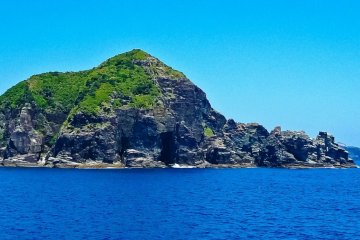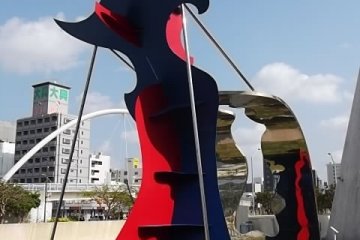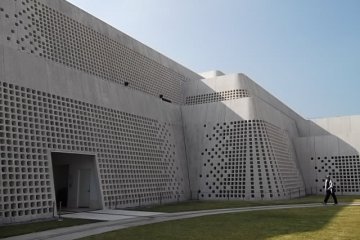Before Okinawa became part of Japan, Naha was the capital of the Ryukyu kingdom, an independent state that traded with Japan and China. Its culture was influenced by both these larger neighbours, and by the seas surrounding the islands, and the Okinawan Prefectural Museum gives you a fascinating insight into its colourful, sometimes turbulent history. Just ten minutes' walk from Omoromachi station on Naha's Yui monorail line, the building has an eye-catching design that makes it easy to spot.
The exhibition space is divided clearly into two: in the centre you have the general exhibition, charting the progression from separate fiefdoms and squabbling chieftains to a unified, prosperous kingdom, then the modern era after its annexation and absorption into Japan. Perhaps not wishing to ruffle feathers, it's a little light on the abolition of the Ryukyu kingdom and the sometimes strained post-war relations between the islanders and the US military - astonishingly, Okinawa remained under US control until 1972 - but overall, it gives a good overview of the kingdom's life and the prefecture's times.
Round the outside then there are a number of rooms with exhibits and artefacts showing more detail of the islanders' day-to-day lives. There are five rooms, including an Archaeology Gallery and Folklore Gallery; a highlight is the Arts and Crafts Gallery, with lively, colourful pictures, sculptures, textiles and more, displaying the invention and distinctiveness of Ryukyu culture. There's also the Touch and Experience Room, a fun place for the kids, with twenty-odd objects to pick up and handle, related to both the islands' natural surroundings and the islanders' lives.
Across the hall in the same building you have the art museum, with an ever-changing roster of exhibitions, often by locally based artists or on a theme connected to the islands. There's also art on display outside the museum, with a couple of modern sculptures outside the front entrance, large, striking and unusual.
Also outside, but in the inner courtyard of the building, there are reconstructions of a granary, a kiln and a private house of Ryukyu times. These complement the objects on display inside, helping you get a fuller picture of life during the Ryukyu era. All in all, it's well worth investing half a day at the museum, to get a sense of Okinawa's unique place in Japan's history.











